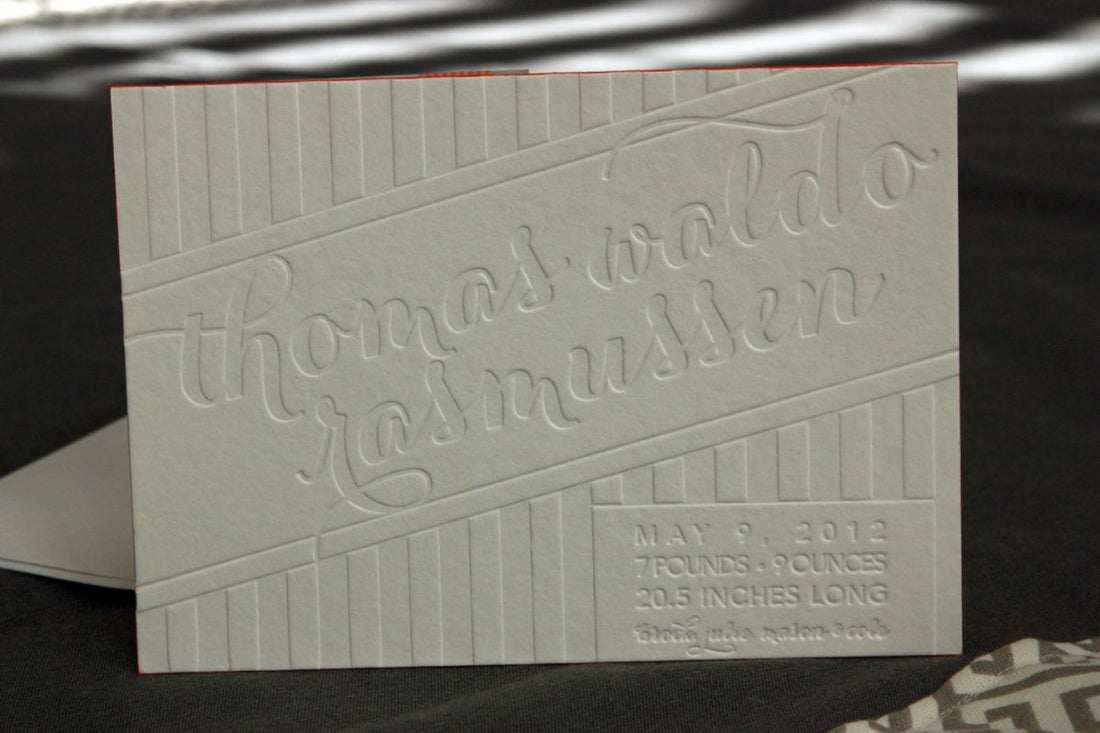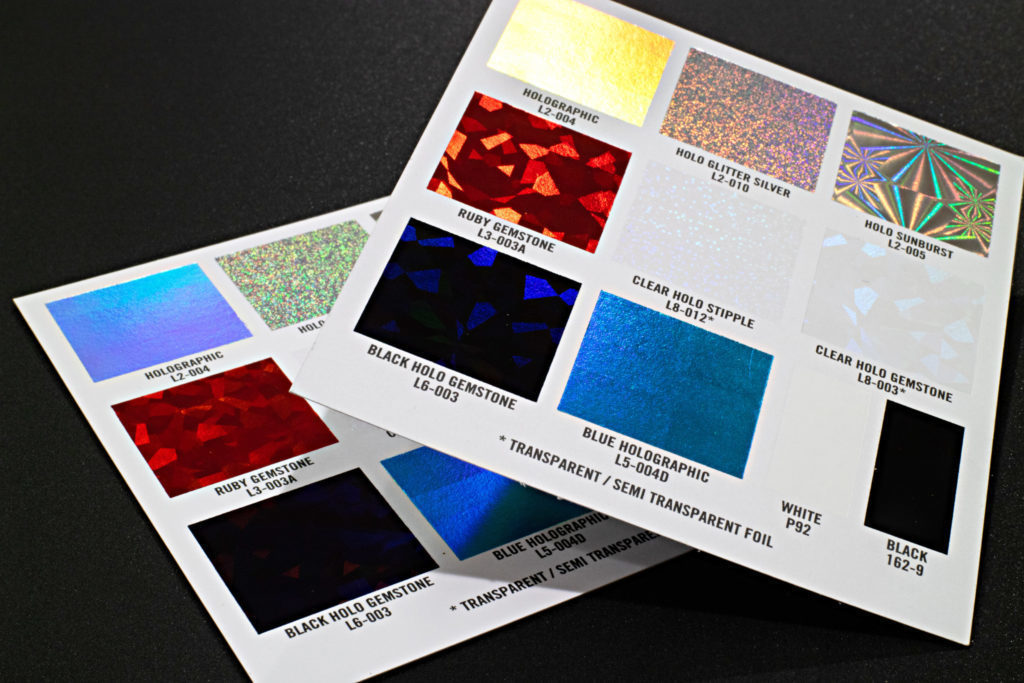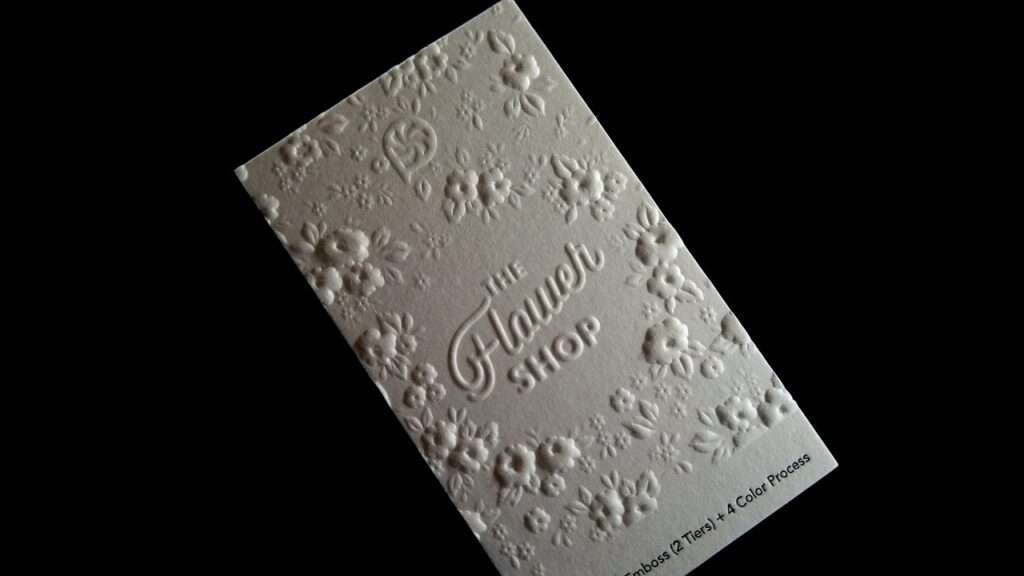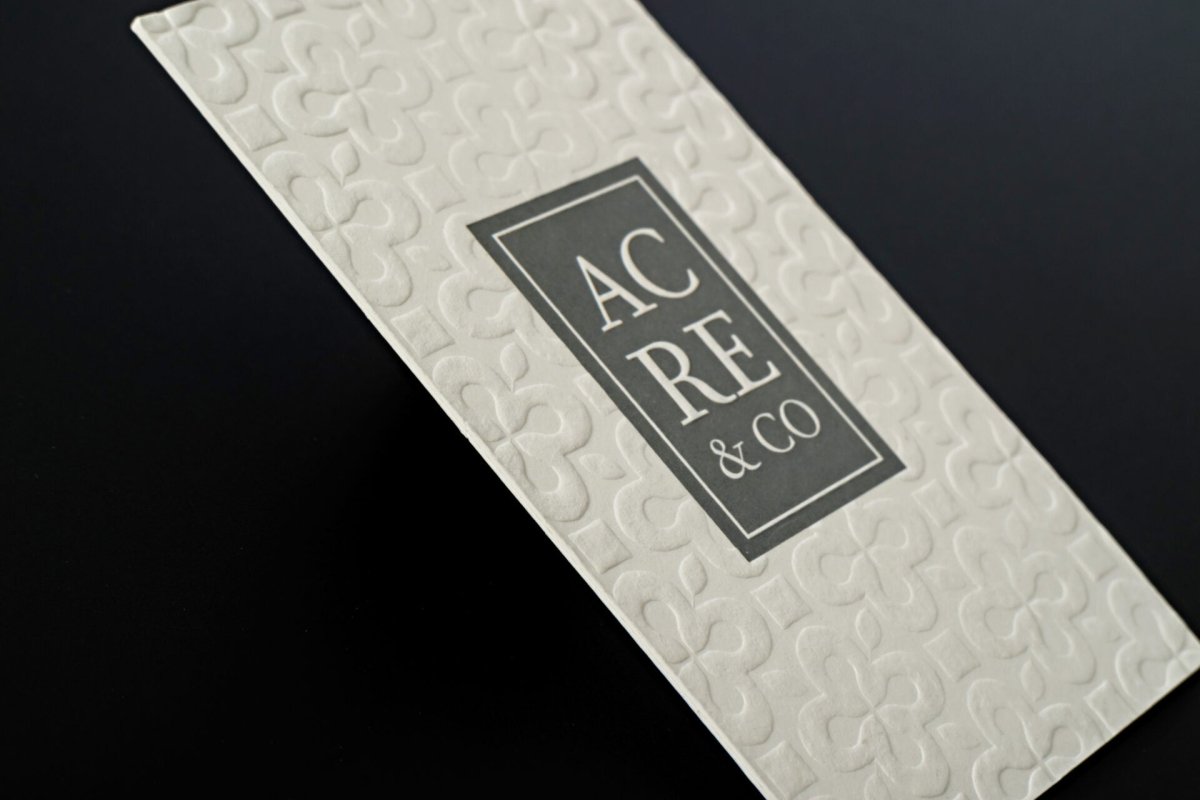
The Best Papers for Letterpress Printing in the World!
adminShare

Image Credits: steelpetalpress.com
Letterpress printing has been there for decades. It's a style of printing that involves using raised type to create an impression onto a sheet of paper, cloth, or any other material.
This gives the effect of having text with a thick and thin texture which adds depth to its design as well as being easy to read because the letters seem embossed on the surface, giving it something extra compared to modern typography. Letterpress is mainly used for things such as invitations, announcements, posters, and quotes or poems.
What is Letterpress Paper?

Image Credits: lifestylecrafts.com
First of all, you need to know that not everything can be used for letterpress printing since this technique only works with very specific types of materials. You need a certain thickness and a bit of elasticity as well, which makes it easier for the pressure to transfer from the letters to the rest of the card or whatever you're using.
Not to mention that these papers must have some kind of coating installed to make sure that your ink sticks on top successfully and also stays there without any problems. There are multiple companies that produce such products, but generally speaking, the most popular ones are Magnani, Gmund, and Rives. They have a variety of options available, and depending on what exactly you're looking for in them, you can choose the one that will suit your needs.
What are the Best Papers for Letterpress Printing?
Choosing the best paper for letterpress printing is an art on its own. This is because you have to consider many factors such as thickness, durability, and even the type of ink you will use for your project. There are a few different categories of letterpress papers out there:
- Wood Pulp: These types of paper are made from wood pulp which gives it very natural looks and feels while also being quite heavy and thick. It's pretty much considered the best material for making stationery and fine art, so if you print something with this kind of paper, it will definitely stand out in a crowd. Plus, this stuff really does last forever, especially when covered with a polymer coating.
- Cotton Paper: It's basically the same thing as pulp, except it's made entirely from cotton instead. It comes in various thicknesses depending on how much cotton is used in each sheet. The biggest advantage of cotton paper over wood pulp is that it is way much stronger. And the best part? Cotton doesn't yellow nearly as much as wood pulp over time.
- Resin Coated Papers: This is another great way to get letterpressed materials that last for a very long time. It uses resin which is pretty much the same thing that they use to make plastic stuff like coffee cups with so it's kind of tough, strong, and waterproof at the same time.
Other than the category of letterpress papers, the paper choice has to be one of the most important aspects of making your print look professional. A common mistake people who are new to this type of job often make is choosing standard copy paper or just any other type of cheap printer paper that they can find in their office. This can present two problems because, on one hand, you're wasting resources by not even bothering to find proper materials, while on the other hand, if you're printing something on low-quality materials, then you can't expect it to look great. Some examples of good letterpress papers to use include:
- Crane's Lettra: This is one of the most popular options for letterpress paper. It's very durable, it doesn't tear or turn yellow after years, and even if you use a roller to print on it, you don't have to worry about getting ink smudges all over because it has a special coating that prevents that from happening while also making the ink stick on the paper perfectly. Plus, you can cover this with polymer without any problems (not that you would anyway).

Crane’s Lettra. Credits: Legion Paper
- Magnani: This is an Italian brand, so it's not as popular as the first one, but still, you can find it on some online stores. They have a huge selection of different kinds of paper that will definitely blow your mind because there are over 100 variations for this material alone. One of their main advantages is that they're also water-resistant, which means if you're using them to print something like posters without any coating, then nothing will happen to them even if it gets wet.
- Rives: If you want something classy and old school, then Rives might be the right choice for you. This is a French company with multiple options available depending on what exactly you need for your project. Their paper has a very good thickness, great texture, and since it's one of the best companies out there, they also print it with high-quality ink, so you can really expect your prints to last for many years before any problems arrive.

Rives. Image Credits: Legion Paper
What is the Difference between Letterpress Paper and Other Types?
When choosing your paper, you should keep in mind one important thing: weight. You want something heavy enough to stand on its own without bending or folding up while at the same time being thin and light for the entire process to be fast and easy.
Plus, since letterpress is a relief printing technique, you need to make sure that your paper is flat because otherwise, your print will look distorted. The best way to check up on this before you buy anything is by looking at the stated weight of the material (which should always be present in its description) and then comparing it with other options.
- A standard copy paper has around 80 grams per square meter which makes it very unstable when used with letterpress
- Crane's Lettra has 115 grams which makes it extra thick but also stable enough for excellent results
- Magnani has about 135-140 grams.
- Gmund is another excellent option that comes with 90 grams per square meter. It's thin, stable (which also makes it very durable) and best of all the price is very low for this quality.

Gmund. Image Credits: IciPaper
Which Questions to Ask When Shopping for Letterpress Papers
You have to remember that the paper is an important part of that process since it'll be what you print on, so if something goes wrong there, then your entire project will fall apart. The last thing you want is for your letterpress printing to turn ugly or, even worse, get ruined because of bad materials.
That's why when shopping for a new supplier, ask them all about their materials and find out which one you should choose based on your needs. If they're not willing to answer this question, just move on to a different provider because it means they don't really care about quality. Here are two helpful questions you may want to ask:
- What type of paper is it: This should be the first thing you ask. There are basically three different types available when buying letterpress papers: wood pulp, cotton, and rag (which is the highest quality). You may want to go for rag because this is 100% pure material that will last forever, even in case if you use rubber to print on it. Also, if you want something ultra high quality, then cotton might be a good option, too but keep in mind that these two things aren't water-resistant, so try to avoid printing posters or anything like that with them
- What's its weight? As mentioned above, Letterpress requires heavy materials, which means at least 90 grams per square meter. Anything less won't work well with this printing technique so keep that in mind.
How to Care about Letterpress Paper?
You don't really need to do anything since these are made out of normal materials, but you should know that they have a special coating on them that protects them from liquids, so don't worry if your prints get wet or something gets spilled on them just clean everything with water, and you're good. Some of them can also bleach, so be careful not to use too much heat on them because they might start developing some yellow spots over time.
Should I Print Everything with Letterpress?
It doesn't make sense to use letterpress only when there are other methods that provide similar results but with less work involved. That's why it's recommended to stick with this type of printing only if you really want to go all out on the process or do something special since if you think about it, then regular laser or digital is actually more practical in most cases.
It may take longer, but the quality won't be affected by anything outside of your control (which is very important). Plus, you don't have to worry about setting up any stuff beforehand, so you'll be saving yourself a lot of time this way.
In Summation
There are many pre-made kits on the market today but sometimes, having everything ready isn't the best idea. Ideally, letterpress printers need specific stuff because every little thing has a big impact on how good your final product will look like. If you're willing to learn more about this pretty much-dying art, then go ahead and read some materials about it.
Author Bio:
Eun Rockwell is a blogger resume writer, and academic writer from the United Kingdom who works with a service that provides CV editing. She's always looking for new topics to write about and is constantly dedicated to demonstrating her talent in new and difficult writing genres. Books are one of her favorite hobbies. You may contact Eun via Twitter at @rockwell_eun_.


